Precontact Soapstone Mining
Soapstone has been and continues to be an important cultural element in many native societies. In precontact times, it was a highly desired material for articles such as cooking pots and lamps and symbolic items such as figurines. More recently it is used for commercial purposes.
Soapstone is characterized by a soft soapy texture and is an ideal stone for carving because it contains the mineral talc. It has been found atprecontact archaeological sites throughout Newfoundland and Labrador,mostly as fragments of cooking pots and lamps, indicating its importance as a component of precontact subsistence. Organic items do not usually survive in archaeological contexts in Newfoundland because of acidic soil conditions; soapstone, however, survives well, albeit rarely as a complete artifact.
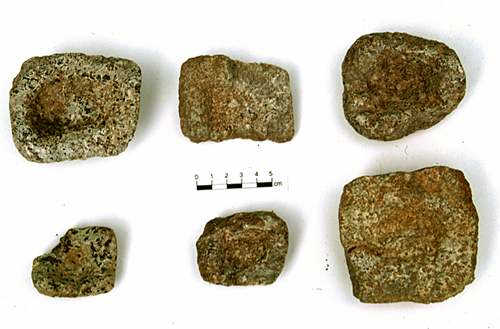
Natural soapstone outcrops occur throughout the province; however, one outcrop in particular gives us explicit evidence of precontact mining. This soapstone quarry is located at Fleur de Lys, a town on the Baie Verte Peninsula, where extensive scars on the soapstone cliffs indicate centuries of quarrying activities.
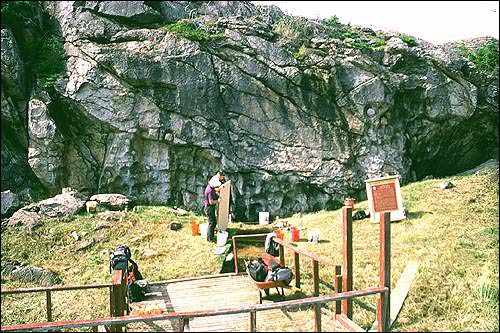
Field work at this quarry was begun in the early 1980s by archaeologists Christopher Nagle and Callum Thomson. It was not until excavations by Nagle in 1997, however, that Dorset Palaeoeskimos could be directly associated with the quarry. It is now a protected archaeological site with an active research program under the direction of John Erwin, University of Calgary. The site is also being developed for tourism purposes.
The Fleur de Lys quarry was visited by more than one precontact group. Archaeological evidence indicates that Maritime Archaic peoples used it approximately 4,000 years ago, while Middle Dorset Palaeoeskimos used the soapstone approximately 1,200-1,800 years ago. The Middle Dorset have been directly associated with this quarry, as their finished vessels correspond in size with extraction scars on the quarry face. Other evidence of Dorset presence includes lithic (stone) tools, including chert endblades (projectile points), quartz crystal microblades, chert endscrapers, and flakes produced from modifying tools at the site.
Archaeological investigations at Fleur de Lys indicate that this soapstone was used primarily for functional purposes. It was the preferred material for cooking and lighting utensils for many centuries, as it was durable and probably held some spiritual significance as well. The cooking pots and lamps created from Fleur de Lys soapstone vary from rectangular to oval in shape and are approximately 20-25 cm wide and 25-30 cm long.
Mining Procedure
Although soapstone looks particularly dense, it can be carved with relative ease. Large crude stone tools were used to pry, chisel and scrape soapstone from the face of an outcrop. These bulky quarrying tools were made from a variety of materials including quartzite, a very hard, solid rock.
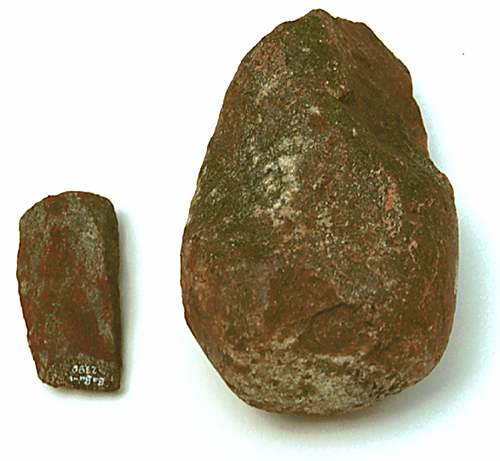
Shaping the soapstone required smaller, more precise tools.
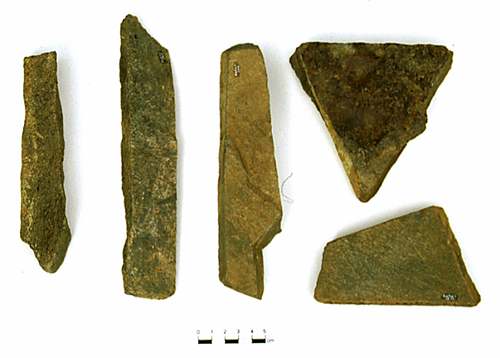
The mining operation at Fleur de Lys took place in stages. The size and shape of the artifact was probably considered before quarrying took place. Visualization of the finished product aided in the carving process.
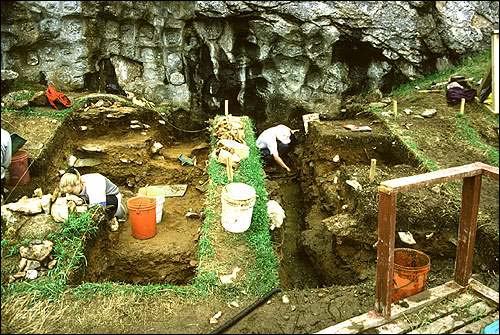
At the quarry, removal scars across the cliff face reveal efficient quarrying methods. After the first nearly circular chunk of soapstone (the preform) was removed, the final edge that was separated from the parent rock became the first edge for the next preform; thus only the first preform had to have all four sides detached. This method indicates that the shape of the vessel was decided before the chunks were removed. Some of the vessels were probably carved at the quarry site, but it is more likely that they were finished at another location.
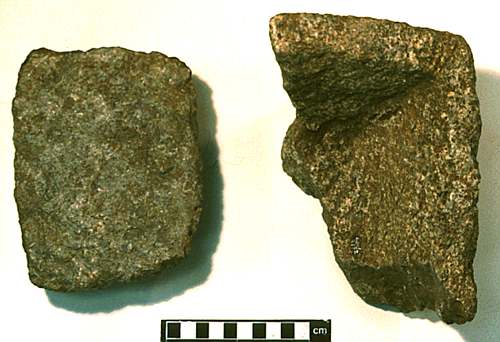
Not every attempt at extracting a preform or creating a vessel was successful. When weaknesses in the rock prevented soapstone from being detached, that attempt was terminated and carving would begin on a nearby area. precontact mining was clearly a result of trial and error. Nevertheless, the many scars attesting to successful removal of vessel preforms shows that the Middle Dorset had an efficient mining operation at Fleur de Lys that may have persisted for centuries.




